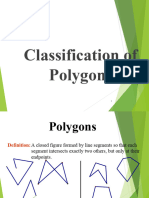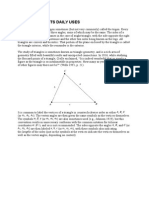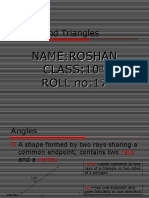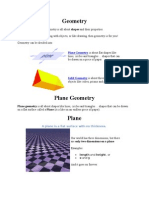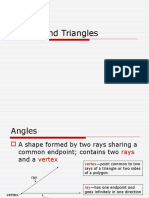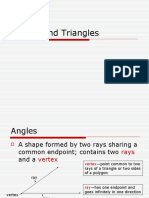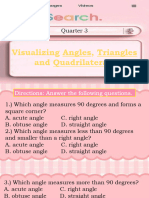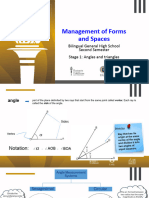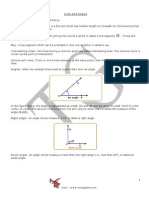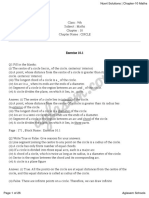0% found this document useful (0 votes)
31 views8 pagesGeometry of Class 6
The document provides a comprehensive overview of classifying angles and shapes, including definitions, types, and properties of angles and polygons. It details the classification of triangles by sides and angles, quadrilaterals, and includes formulas for calculating area and perimeter for various shapes. Additionally, it discusses real-world applications and problem-solving strategies related to geometry.
Uploaded by
moomaljhatial28Copyright
© © All Rights Reserved
We take content rights seriously. If you suspect this is your content, claim it here.
Available Formats
Download as DOCX, PDF, TXT or read online on Scribd
0% found this document useful (0 votes)
31 views8 pagesGeometry of Class 6
The document provides a comprehensive overview of classifying angles and shapes, including definitions, types, and properties of angles and polygons. It details the classification of triangles by sides and angles, quadrilaterals, and includes formulas for calculating area and perimeter for various shapes. Additionally, it discusses real-world applications and problem-solving strategies related to geometry.
Uploaded by
moomaljhatial28Copyright
© © All Rights Reserved
We take content rights seriously. If you suspect this is your content, claim it here.
Available Formats
Download as DOCX, PDF, TXT or read online on Scribd
/ 8






